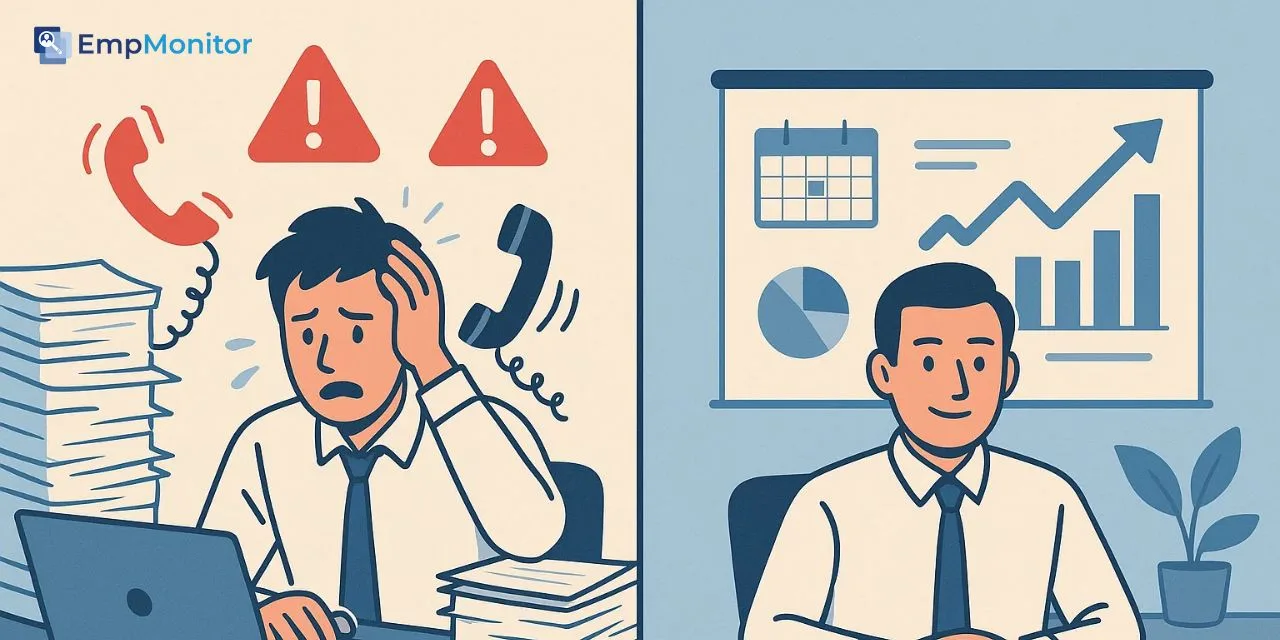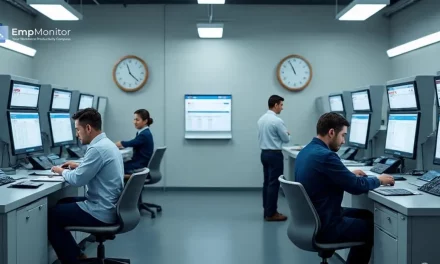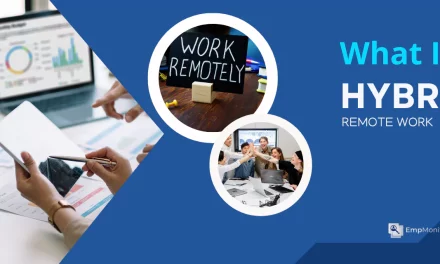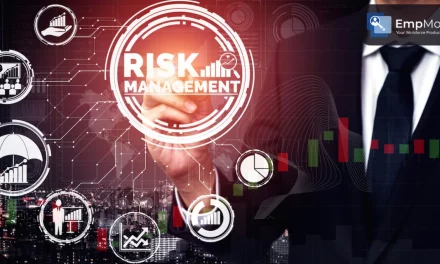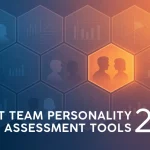In both the workplace and everyday life, how you respond to situations can greatly influence your outcomes. Some people take a proactive approach, planning, anticipating challenges, and acting early. Others are more reactive, addressing issues only after they occur. This contrast is often described as proactive vs reactive behavior.
Being proactive means taking initiative, preparing in advance, and staying ready for what’s next. On the other hand, being reactive means responding to events only after they happen. Both approaches have their place, but how you balance them can make a big difference in productivity, decision-making, and long-term success.
In this blog, we’ll break down the meaning of proactive vs reactive, look at real-life examples, and explore why adopting a proactive mindset can often lead to better outcomes. We’ll also touch on how the right tools, like Empmonitor, can help individuals and teams build a more proactive approach to work.
you can also Listen to Our podcast here,
Proactive vs Reactive Meaning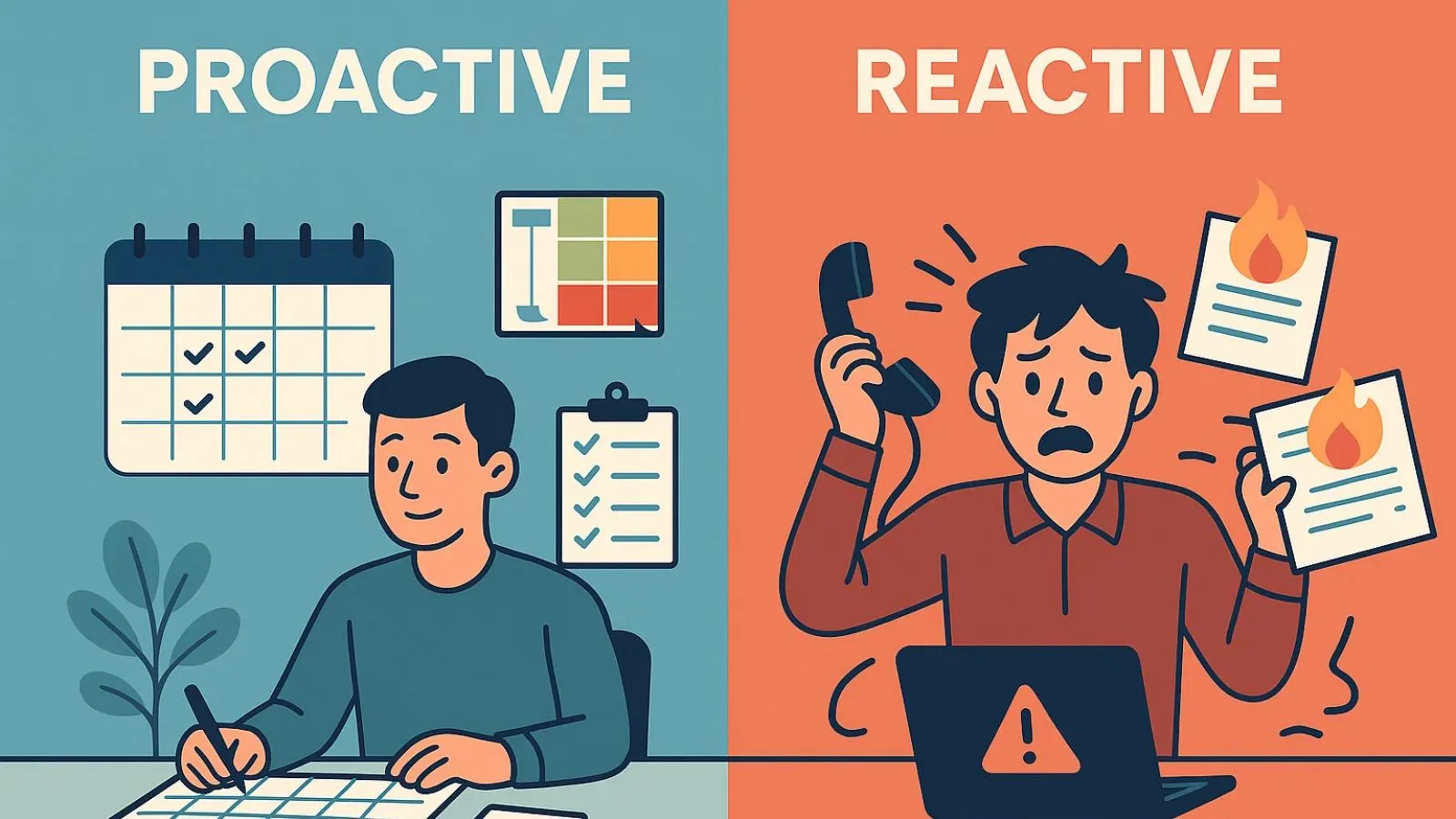
To understand the idea of proactive vs reactive, let’s start with the basics. Being proactive means taking action in advance. You anticipate what could happen and prepare for it, often preventing problems before they arise. For example, setting aside time to plan your week, scheduling important tasks early, and identifying possible risks are all proactive habits.
Being reactive, on the other hand, means waiting until something happens before responding. A reactive approach can sometimes feel like “putting out fires,” you only deal with issues after they appear. For instance, fixing a project mistake at the last minute or handling customer complaints only after they escalate are reactive actions.
While the difference might sound simple, the proactive vs reactive mindset goes beyond just timing. It reflects how you view responsibility, control, and planning in your daily life. Proactive people focus on what they can control, while reactive people spend more time responding to external factors.
What Is the Difference Between Proactive and Reactive?
At first glance, proactive vs reactive might seem like opposite sides of the same coin, but the distinction runs deeper. The main difference lies in timing and control.
A proactive person looks ahead, anticipates challenges, and makes deliberate choices to guide outcomes. For example, preparing a backup plan before a big client meeting shows foresight. Workforce forecasting is another example of proactive planning, helping organizations anticipate staffing needs and allocate resources efficiently. A reactive person, in contrast, waits until the issue surfaces and then decides how to respond. In that same scenario, being reactive could mean scrambling for answers only after the client raises concerns.
Another important point in proactive vs reactive behavior is mindset. Proactive individuals tend to focus on things within their control, while reactive individuals often respond to external pressures or unexpected events. This difference shapes not only productivity but also stress levels and confidence.
In short, the key difference between proactive and reactive lies in preparation versus response. Both are necessary in different situations, but leaning toward proactivity often builds stronger results over time.
Proactive vs Reactive Examples in Daily Life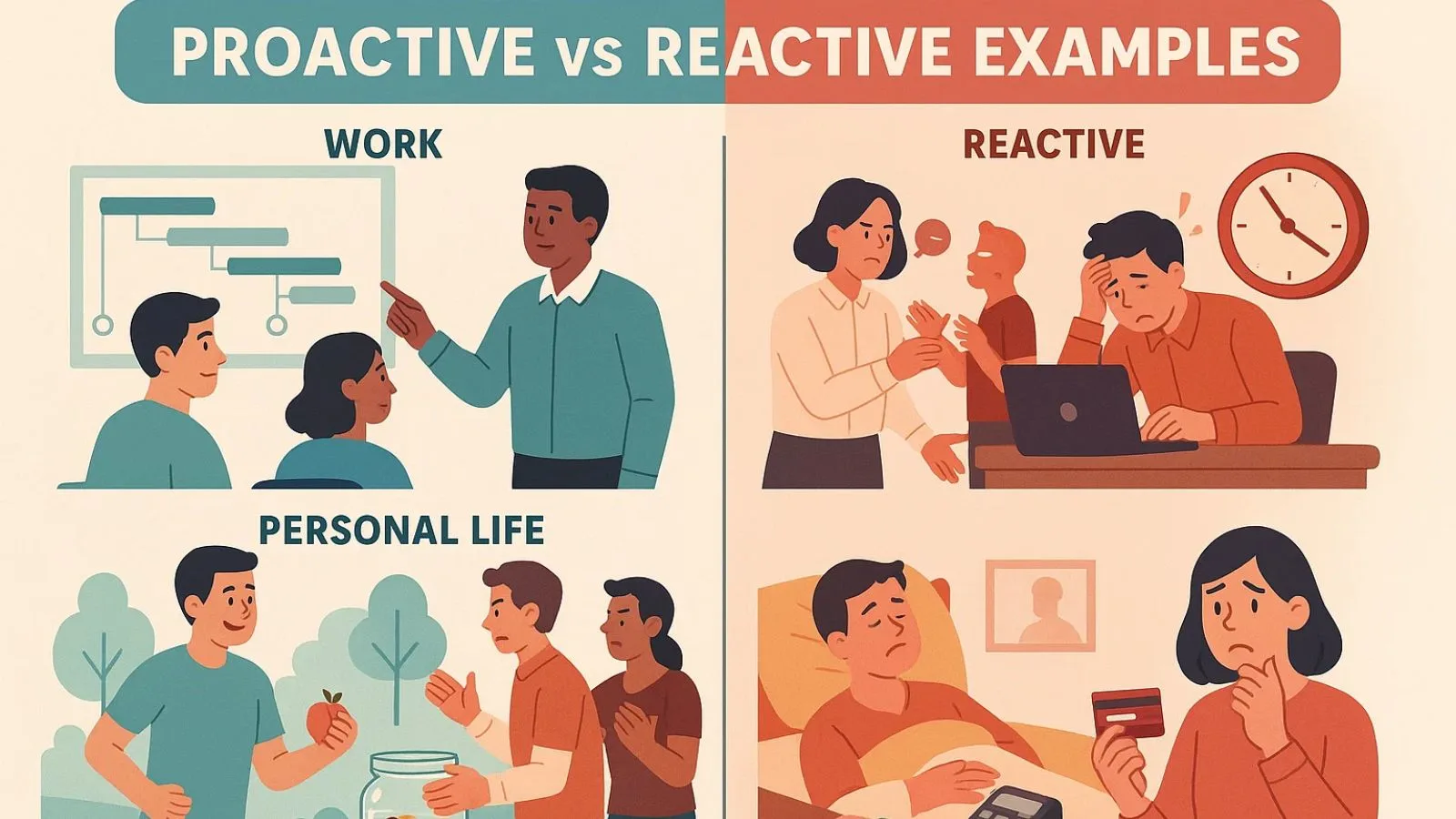
One of the best ways to understand proactive vs reactive is by looking at everyday situations. These examples make it clear how both approaches show up in work and personal life.
Workplace Examples
- Proactive: An employee creates a detailed project timeline weeks in advance, identifies potential delays, and sets buffer time.
- Reactive: The same employee waits until a deadline is approaching and then rushes to complete tasks under stress.
- Proactive: A manager checks in with their team regularly, offers support, and prevents small issues from turning into big conflicts.
- Reactive: The manager only steps in when tensions have already escalated and team performance suffers.
Personal Life Examples
- Proactive: Scheduling yearly health checkups, maintaining a balanced diet, and exercising regularly to avoid future problems.
- Reactive: Visiting the doctor only after falling sick or when symptoms become serious.
- Proactive: Saving a portion of income every month to build an emergency fund.
- Reactive: Borrowing money or relying on credit cards only after unexpected expenses occur.
These proactive vs reactive examples show how each approach influences outcomes. Proactive choices often reduce stress and improve results, while reactive ones can lead to last-minute pressure and fewer options.
Also Read,
Why Proactive Instead of Reactive Is a Smarter Choice?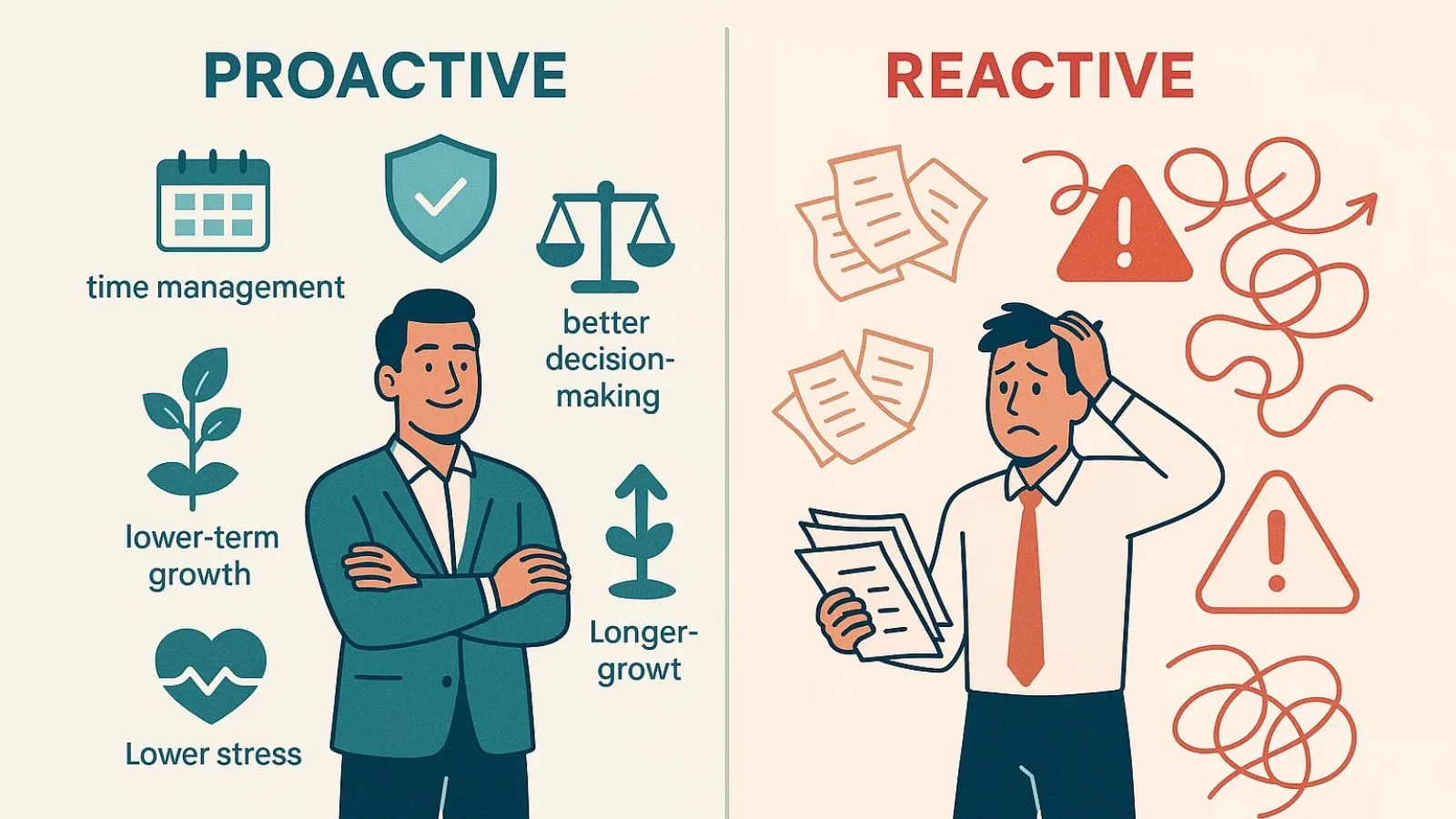
When comparing proactive vs reactive, being proactive often gives you the upper hand. A proactive mindset allows you to anticipate issues, plan, and stay in control of situations rather than being controlled by them. Leveraging workforce intelligence can enhance this process by providing insights into team performance, productivity trends, and potential challenges before they arise. This doesn’t just make life easier; it also builds confidence and reduces stress.
Here are a few reasons why choosing proactive instead of reactive is usually smarter:
-
Preparedness: Proactive people are ready for challenges before they happen, which means fewer surprises.
-
Time Management: By planning, you can prioritize important tasks and avoid last-minute chaos.
-
Better Decision-Making: Proactive thinking gives you space to evaluate options calmly, instead of making rushed choices.
-
Lower Stress: Anticipating problems reduces the panic that comes with reacting to unexpected issues.
-
Long-Term Growth: A proactive mindset encourages steady progress instead of getting stuck in a cycle of quick fixes.
While reactive responses are sometimes unavoidable, leading with proactive habits and utilizing workforce intelligence sets you up for consistent productivity and success.
When Being Reactive Instead of Proactive Can Still Work?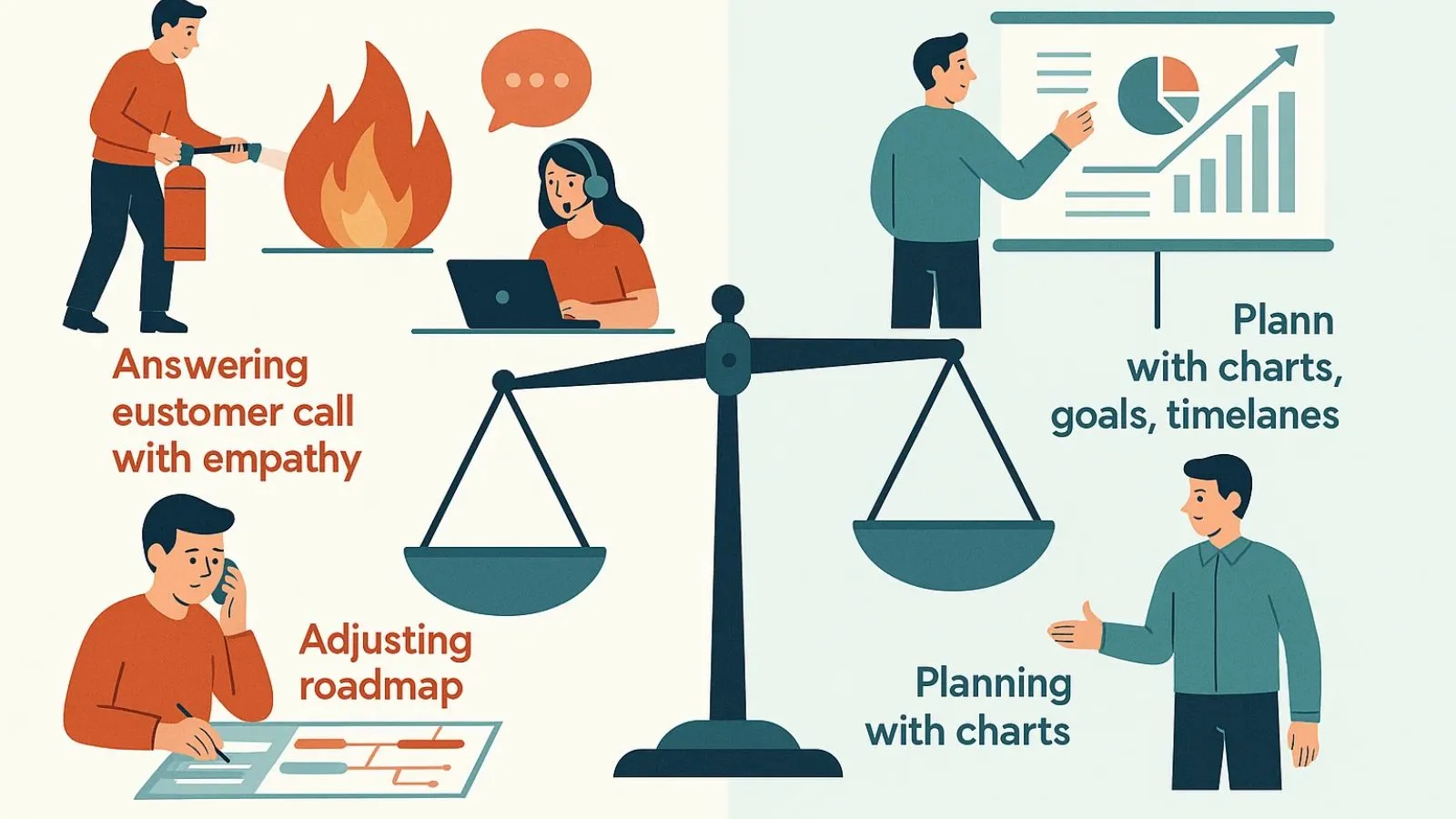
While many benefits come from being proactive, it doesn’t mean reactive behavior is always bad. In fact, there are times when a reactive mindset is necessary and even more effective than planning. Understanding both sides of proactive vs reactive helps you know when to use each approach.
Situations Where Being Reactive Helps
- Emergencies: In a crisis, quick decisions matter more than detailed planning. For example, responding immediately to a safety hazard is essential.
- Customer Service: Sometimes, you can only act after a customer raises an issue. A fast and thoughtful reaction can turn a negative experience into a positive one.
- Unexpected Changes: No matter how well you plan, surprises happen. Being flexible and reactive allows you to adapt without getting stuck.
So while a proactive mindset gives long-term stability, being reactive instead of proactive is often the best response to urgent problems. The key is finding a balance, knowing when to plan and when to act quickly.
Also Read,
Proactive vs Reactive at Work: Driving Productivity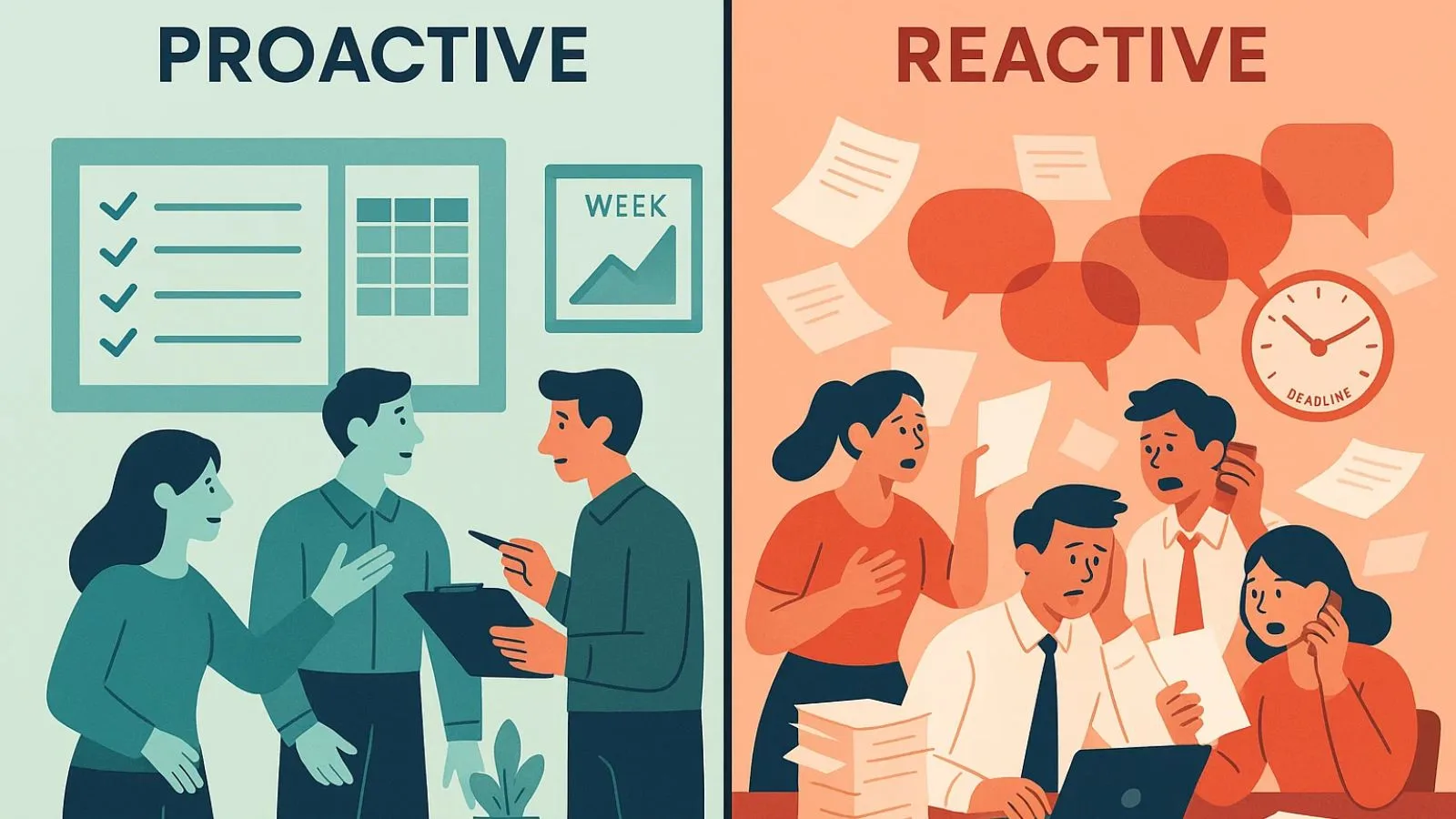
Nowhere is the contrast between proactive vs reactive more visible than in the workplace. The way employees and managers handle tasks, deadlines, and challenges can directly affect overall productivity.
A proactive approach at work often means setting clear goals, planning projects, and regularly reviewing progress. For example, teams that create weekly schedules, track their time effectively, and anticipate risks tend to meet deadlines with less stress. Proactive employees take initiative instead of waiting for directions, actively seeking opportunities to enhance processes.
A reactive approach, on the other hand, focuses on responding to situations as they arise. While this can be useful for handling urgent problems, a team that operates primarily in a reactive mode may constantly feel behind. Delays, poor communication, and rushed decision-making are common signs of reactive work habits.
When it comes to productivity, the balance of proactive vs reactive determines whether work feels structured and efficient or chaotic and stressful. Proactivity builds momentum, while reactivity keeps you stuck in a cycle of problem-solving.
How Empmonitor Helps Teams Stay Proactive?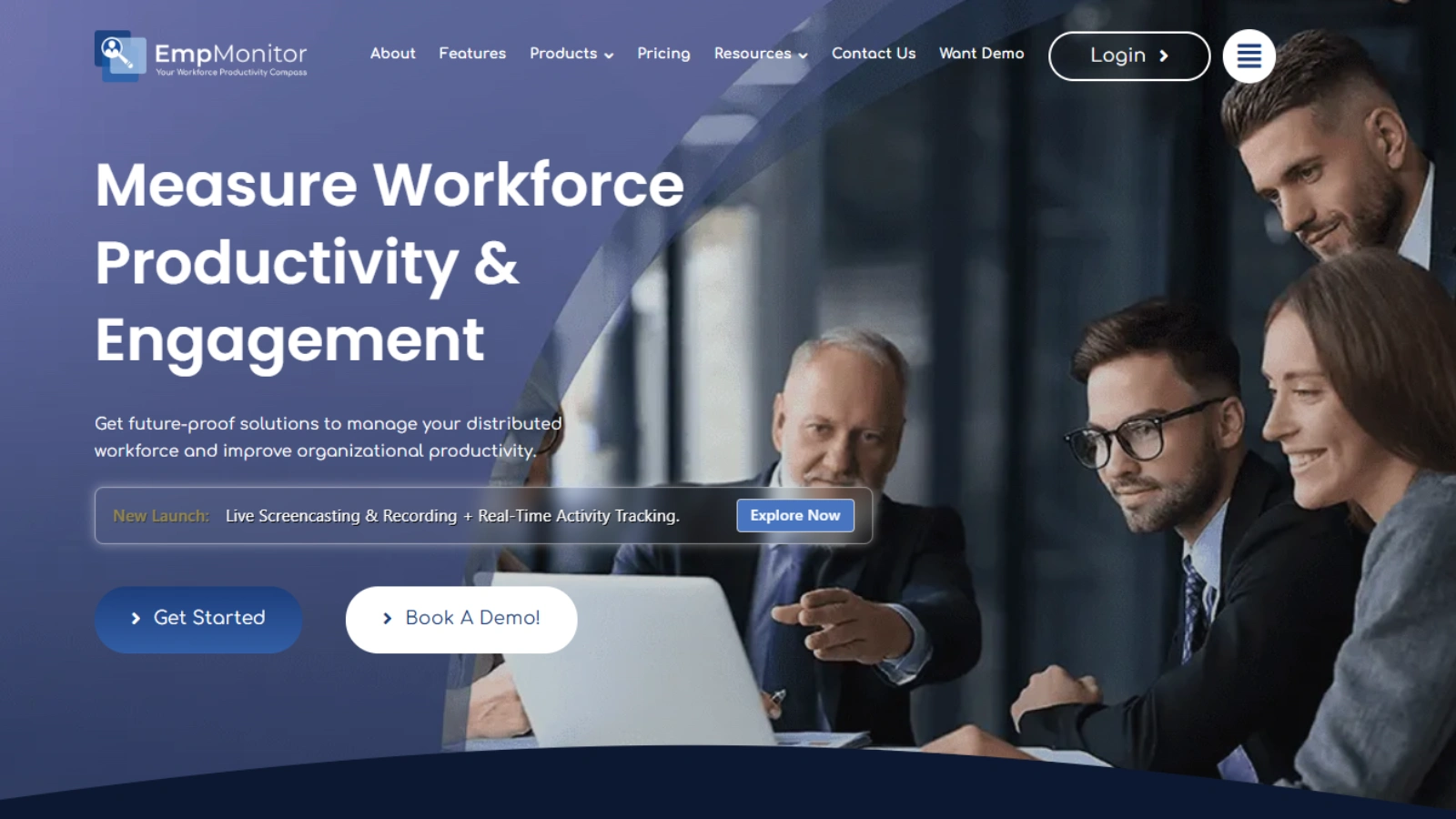
Adopting a proactive approach is easier when you have the right tools to support it. This is where Empmonitor comes in. As a reliable productivity tracking software, it helps organizations stay one step ahead instead of constantly reacting to issues.
With Empmonitor, managers can:
- Track Productivity in Real Time: Get clear insights into how employees spend their time across apps, websites, and projects, helping spot challenges before they turn into problems.
- Identify Workflow Bottlenecks: Visual dashboards and detailed activity reports make it easy to detect delays or underperforming areas, allowing managers to address issues proactively.
- Monitor Attendance and Performance: Track working hours, breaks, and overall productivity patterns without waiting for end-of-month reports. Real-time insights ensure teams are on track consistently.
- Set Alerts for Key Activities: EmpMonitor allows managers to receive instant notifications for unusual activity patterns, missed deadlines, or inactivity, enabling quick intervention.
- Task and Project Tracking: Assign tasks, monitor progress, and check completion status directly in the platform. This ensures accountability and keeps projects moving smoothly.
- Encourage Accountability and Transparency: Employees know their efforts are visible fairly and transparently, naturally promoting proactive behavior and self-management.
Instead of waiting until productivity drops, teams using Empmonitor can anticipate problems, plan solutions, and create a more efficient work culture. This shift from proactive vs reactive saves time, reduces stress, and boosts overall performance.
Building a Proactive Mindset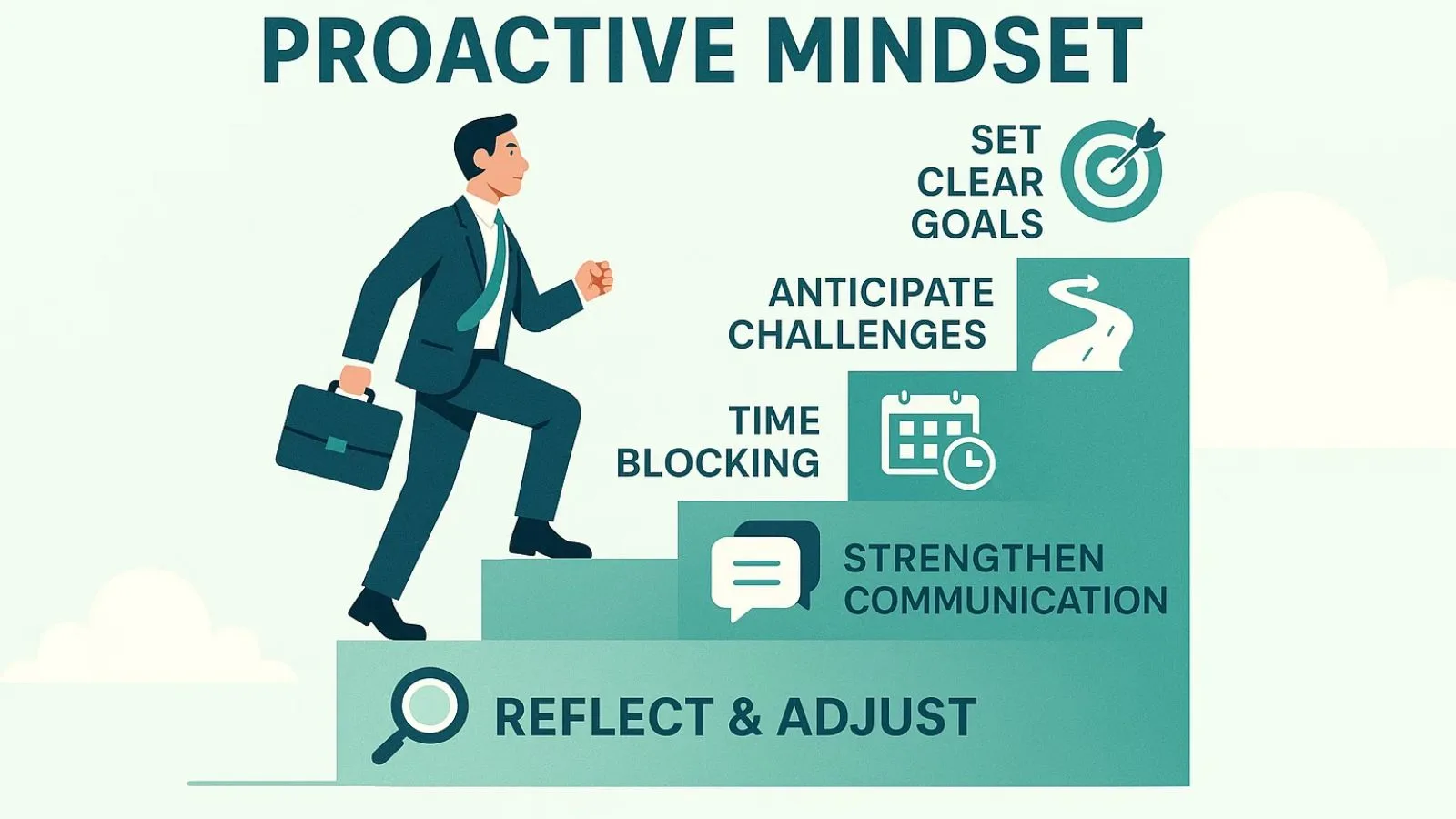
Changing from being reactive to thinking proactively doesn’t happen quickly; it needs regular practice. But the payoff is huge: less stress, better results, and a stronger sense of control. When it comes to proactive vs reactive, the goal is not to eliminate reactivity but to lead with proactive habits most of the time.
Here are a few steps to build that mindset:
- Set Clear Goals
When you know what you’re aiming for, it’s easier to plan your steps instead of reacting to distractions. - Anticipate Challenges
Think about possible roadblocks before they happen. This allows you to create solutions ahead of time. - Practice Time Blocking
Dedicating specific hours to tasks keeps you focused and prevents last-minute scrambling. - Strengthen Communication
Sharing updates early and often reduces misunderstandings and avoids reactive problem-solving later. - Reflect and Adjust
Take time to review what went well and what could be improved. Proactivity grows when you learn from past experiences.
Building these habits takes patience, but over time they create a natural shift. Instead of always being caught off guard, you’ll start noticing how planning ahead changes both productivity and confidence.
Understanding Proactive vs. Reactive Behavior
In both work and daily life, how you respond to situations can shape your results. Some people plan, anticipate challenges, and take early action. Others wait for problems to arise before reacting. This difference is often described as proactive vs reactive behavior.
The Traits of Reactive Employees
Reactive employees, on the other hand, tend to respond only when issues occur. While they can handle crises effectively, they may miss opportunities for improvement and often feel caught off guard.
Benefits of Being Proactive
- Improved productivity: By anticipating challenges, tasks are completed more efficiently.
- Better problem-solving: Proactive thinking helps prevent small issues from turning into bigger problems.
- Career growth: Taking initiative is often noticed by managers and can open up leadership opportunities.
How to Develop a Proactive Mindset?
Shifting from reactive habits to a proactive mindset doesn’t happen overnight; it requires regular practice. Start by planning your day, anticipating potential challenges, and taking small steps to address them early. Over time, this approach becomes a natural habit.
Practical Tips to Stay Proactive
- Set clear goals: Knowing what you want to achieve helps you act ahead of time.
- Prioritize tasks: Focus on what’s important before it becomes urgent.
- Take ownership: Treat challenges as your responsibility to solve.
- Reflect and learn: Review situations regularly to identify areas where proactive steps could help.
Conclusion
The comparison of proactive vs reactive shows that both approaches play a role in how we manage life and work. Being proactive helps you plan, stay prepared, and reduce stress, while being reactive allows you to respond quickly in urgent situations. The real key is balance—leading with proactive habits while staying flexible enough to react when necessary.
In the workplace, proactive thinking drives productivity, supports smoother teamwork, and creates long-term growth. On the other hand, relying too heavily on reactive behavior often leads to delays and unnecessary pressure.
By making small shifts—like setting goals, anticipating challenges, and using tools such as Empmonitor—you can build a proactive mindset that keeps you ahead instead of always catching up. Choosing the right approach doesn’t just impact your productivity; it shapes your confidence, career growth, and overall success.
FAQs
- What is the difference between proactive and reactive?
The main difference in proactive vs reactive behavior is timing. Proactive people plan ahead and act before challenges arise, while reactive people respond only after events occur. - Can being reactive sometimes be a good thing?
Yes. While being proactive usually helps with long-term success, being reactive is useful in emergencies or unexpected situations where fast decisions matter more than planning. - How can I become more proactive at work?
You can shift from reactive to proactive by setting clear goals, anticipating potential issues, organizing your time, and using tools like productivity tracking software. Empmonitor, for example, helps teams stay on top of tasks and avoid last-minute stress. -
How does proactive vs reactive behavior improve productivity?
Proactive vs reactive planning lets you anticipate challenges and prioritize tasks, reducing stress and boosting efficiency. -
Can reactive behavior hurt teamwork in proactive vs reactive environments?
Yes. Over-relying on reactive responses can cause delays and miscommunication, while proactive approaches keep teams aligned.

